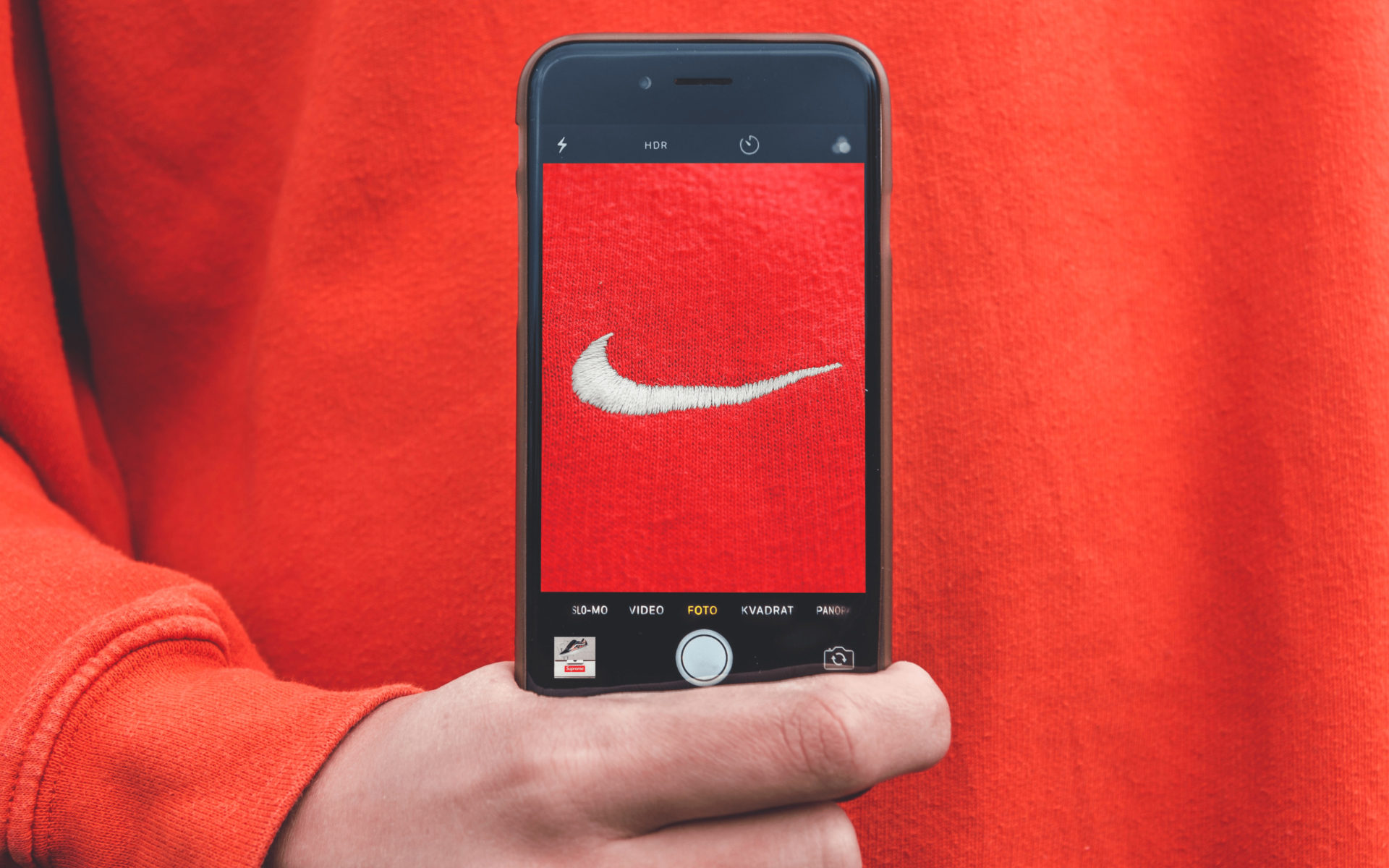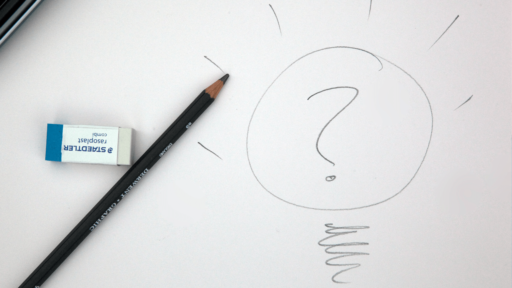Frisbee. Bubble wrap. Dumpster. Popsicle. These are all household names. But did you know they’re actually trademarked brands?

Becoming a household name isn’t easy, and there isn’t an exact formula. But businesses that achieve this have mastered the art of brand awareness.
Whether you’re a startup, agency, or established business, it doesn’t matter. You need your target audience to know who you are and what you’re offering. Otherwise, no one’s going to buy from you.
Here are 6 brand awareness strategy ideas to get your name out there:
- Increase your social signals (+ a handy tool to do so)
- Create a unique brand identity
- Try influencer marketing and referral programs
- Partnerships and co-marketing
- Host or guest star on industry podcasts
- Create linkable infographics
Plus, my favorite brand awareness “quick win” for any brand or startup.
Why should you create a brand awareness campaign?
Did you know that consumers need about 5-7 interactions with a brand before they remember it? It’s pretty much the reason digital marketing and content promotion exists.
A brand awareness campaign is a marketing strategy that’s meant to familiarize potential customers with a product or service. It should increase brand recognition and highlight what makes you different from the competition.
It won’t just be a single ad somewhere. There are usually many moving parts to a successful campaign. (Remember those 5-7 interactions?) The more places new audiences see you, the better.
You could do a hashtag marketing campaign. Or encourage user-generated content with incentives. Or it could be something physical, like Polo.

That guerrilla marketing campaign may be over 10 years old, but it’s still genius. Maximum exposure with minimal effort. That’s the dream.
If we’re sticking to digital marketing, content can have a similar effect. Here are 12 other examples to inspire you.
How do you measure brand awareness?
Unsurprisingly, Coca-Cola ranks as the strongest brand in the United States. But even iconic, strong brands need to keep “top of mind” for consumers. Coca-Cola gets this. Doubling their marketing budget in 2021 most likely helped win them the title.
Jagdish Sheth, a marketing professor at Emory University, summed it up:
“The biggest function of advertising for a well-known brand is reminding people to use or consume the product…”
Big corporations and small businesses alike need to continually work on increasing awareness. But unlike most marketing campaigns, the success of a brand awareness strategy isn’t judged by sales or conversion rates increasing.
So, does appearing in the top 10 SERP (search engine ranking page) results mean you’re nailing your brand awareness?
It can. But what other metrics should you measure aside from that?
Some general places to start are:
- Your social media follower count
- Direct web traffic in Google Analytics
- The number of brand mentions via social listening
- Search volume for your brand name

These are all great indicators. But if you want real answers, sometimes it’s easier to go to the source. Most guides about measuring brand awareness recommend a survey for existing or new customers, asking how they heard of you.
It can help you see exactly where you’re being found. While also highlighting places you’re pretty much invisible.
6 ways to increase brand awareness that really work
A brand awareness strategy should have many different elements. Your target audience isn’t in one place, so you shouldn’t be either.
If you’ve not tried every single one of these ideas, now is the time.
1. Social media signals build brand awareness
With over half the planet’s population on social media channels, it’s no wonder it’s such a huge area of digital marketing these days.
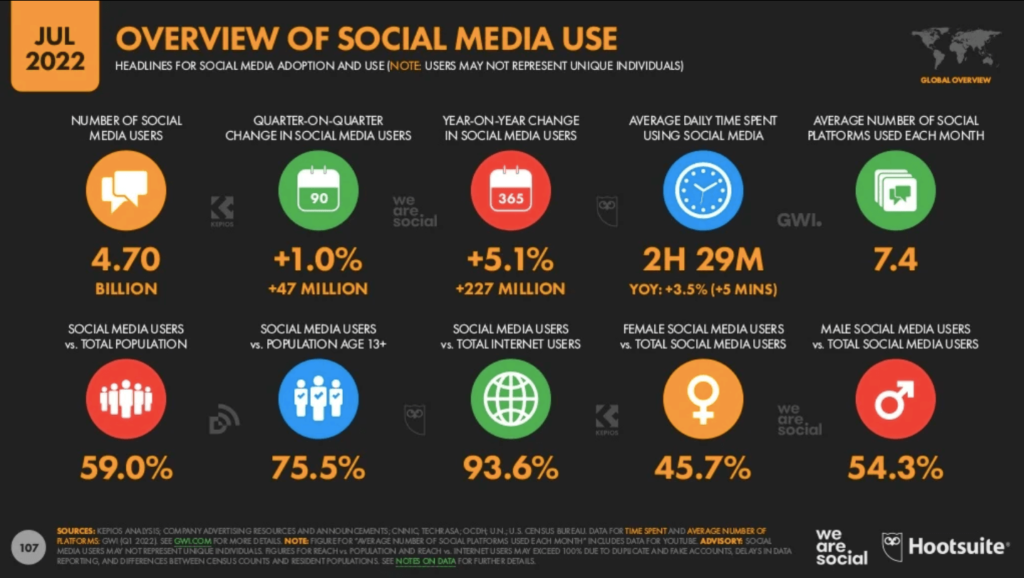
Social media signals are the combined likes, views, impressions, and shares you get on social media platforms. This engagement shows Google that you’re posting valuable and relevant content.
Whether or not social signals impact SEO directly, though, is a constant debate. You say potato, I say potahto. But whatever you believe, all marketers agree that social networks are the perfect place for increasing brand awareness.
So, what metrics should you be tracking when it comes to brand awareness on social media?

A lot of these are considered “vanity metrics” by some marketers. But for a brand awareness campaign, they’re direct indicators of success.
One of the most important in that list comes in at #3 – social shares. We all want them, but they’re not easy to get.
So, how can you convince a lot of people to share your piece of content to raise brand awareness?
How to increase shares on social media
You know what we’re going to say here. Before you can focus on increasing shares, you need to make sure you’re creating high-quality content worth sharing.
Let’s assume you are. After that, here are some ways you can increase your chances of your content being shared on social media:
- Make it as visually appealing as possible
- Get involved with trending topics
- Create captivating captions
- Use hashtags to increase your reach
- Keep it mobile-friendly
- Ask questions and use polls to promote engagement
But maybe you’ve tried all these. The problem is, none are guaranteed to result in an increased level of brand awareness. But what if there was a tool that could?
Quuu Promote – A tool for guaranteed social media shares
Quuu Promote is pretty unique because it’s the only content promotion tool that guarantees social shares.
You see, we have this other tool called Quuu, which is for curated content. And where do you think all those users get that content from? That’s right – Quuu Promote users!
They sign up for content from relevant categories in their niche and get it delivered to their dashboard every day to share. This means everyone sharing your content is a real human that has a genuine interest in what you’re creating.

Quuu Promote works with Facebook, Twitter, and LinkedIn. That’s because we like to focus on the most valuable types of content (not just single images!)
It works best if your site has an RSS feed. This means whenever you publish something new, it’ll go straight into review. Assuming it passes our Quality Criteria (we know it will!), it’ll be sent to everyone signed up to the category it best fits into.
Add your Twitter handle, and watch the tweets and mentions roll in. We recommend engaging with everyone who shares your content. Social media engagement is a two-way street. If you want people to engage with yours, you need to genuinely engage too!
2. Create a unique brand voice and identity for content marketing
Author of “How Brands Grow” Byron Sharp believes that you simply have to have a distinctive brand image to encourage people to buy. If people can remember you, they’ll buy what you’re selling. It’s why brand-building is so important.
The most memorable brands stand out somehow – and this doesn’t have to be just visually. A lot of the time, it’s through that brand’s voice and tone.

A brand voice is the personality a business puts across whenever it communicates.
Sprout Social summed it up perfectly:
“Imagine you went to a dinner party and you’re chatting with all the guests. One person stands out because they’re great at storytelling in a distinctive, unique way.”
It’s displaying your brand message and marketing efforts in a way that’s unique to you (or your clients!)
It makes the most sense when you see it in action. Here are 4 examples of brands that have mastered their voice, tone, and style:
- Dollar Shave Club
- Old Spice
- Innocent Smoothies
- Wendy’s
Dollar Shave Club
When you think of Dollar Shave Club, what springs to mind? It has to be THAT commercial. If you somehow missed the 2012 viral hit, here it is:
Shaving isn’t sexy. And Dollar Shave Club isn’t trying to be. They give you DL on shaving with their low-key, straight-to-the-point delivery.
It’s blunt, honest humor. And we love it.
Old Spice
For unique takes on a brand voice, look no further than Old Spice. Now back to us. Now back to Old Spice. Now back to us.
If you think we’ve gone a bit mad, you may have forgotten this decade-old beauty of a commercial:
It’s goofy. It’s whimsical. It was also directed to men only – not the usual marketing tactic. These days, though, they’re targeting both male and female demographics with their #MenHaveSkinToo campaign.
Innocent Drinks
Innocent’s brand voice shows up in a LOT of case studies. And for good reason. It’s tough pulling off a quirky, informal, ethical tone if you’re owned by Coca-Cola – but somehow, they manage.
It’s so effective because it almost feels like they’re talking directly to you – their buddy.
This was best demonstrated with the launch of one of their new products, “Bolt From the Blue”. Which kind of looked a tad green.
Turning a divisive topic into a fun, cheeky debate is what Innocent’s social team does best. Not to mention the huge engagement that came with it. You can’t even be mad.
Wendy’s
Roasting your competitors and target audience as part of your brand strategy is a pretty big risk. But Wendy’s sassy brand personality has become legendary.


It’s quick, funny, and the team engages in two-way dialogue with followers. It’s this authenticity that resonates with demographics like Gen-Z.
Their audience will regularly ask Wendy’s to roast them too. That’s when you know you’re onto a winning brand voice and strategy.
3. Increase your reach with influencers and referral programs
Nothing can skyrocket your brand awareness efforts quite like a post from an influencer. They’re a lot more authentic than PPC ads and can produce results much faster.
You may think the more followers someone has, the better. But this isn’t always the case. For example, micro-influencers have a much smaller but more dedicated following. Their engagement rates are highest on every social platform.

It’s no wonder 85% of marketers say their top goal for influencer marketing is to raise brand awareness.

But this type of marketing works better on some social media channels than others. One of the biggest pulls of influencers is the engaging content they create. It’s what their audience loves and why they follow them.
As we know, visual content is the most memorable. It’s why channels like Instagram and YouTube are the best places to try influencer marketing. If your brand isn’t on those, it might not be for you.
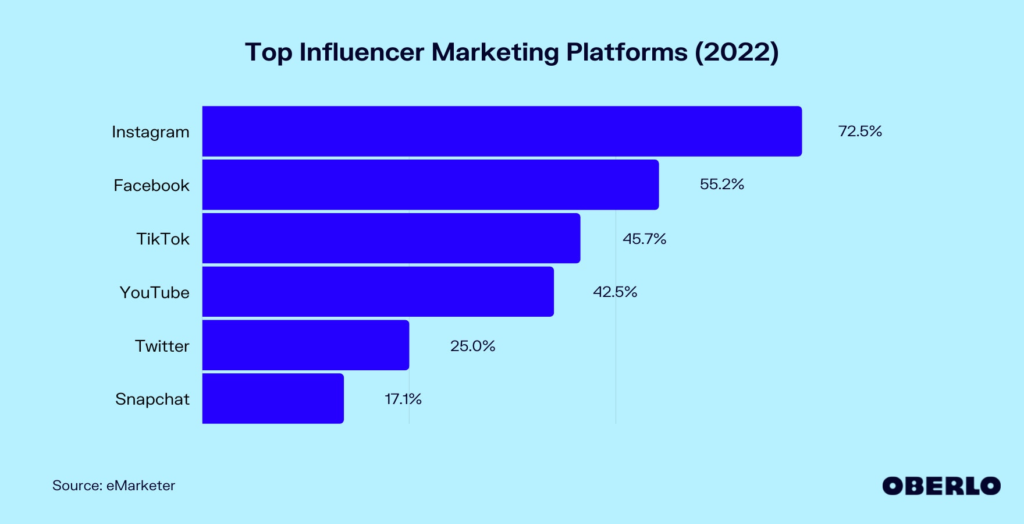
But apart from their engaging content, how else can influencers help your brand awareness strategy?
Referrals and word-of-mouth marketing
94% of shoppers agree that a negative review has convinced them to avoid visiting a business. That’s why word-of-mouth marketing has never been so important. Good or bad testimonials can heavily impact a brand.
Influencers are usually trusted public figures in their niche, and their marketing is a digital form of traditional word-of-mouth. But word-of-mouth is famously hard to track. If you prefer a brand awareness strategy where you can measure ROI, you might want to look into a referral program.

Unique promo codes are the most popular choice for obvious reasons. They’re quick and easy to set up, too.
Every time someone uses a code to buy your product or service, you can measure that influencer’s impact. It’s social proof in action and could be a powerful addition to your brand awareness strategy.
4. Partnerships and co-marketing benefits both brands
A brand partnership involves two (or more) businesses helping each other out. “You scratch my brand, I’ll scratch yours” kinda thing. Co-marketing is another way of describing this strategy.
There are tons of obvious benefits to this, such as:
- Any costs are halved
- Increases reach with a new audience
- Generates buzz
- Starts and develops industry relationships
- Builds trust with consumers
- Accesses another team’s creative ideas
It’s really a no-brainer to try out. But the most important part of the whole process is picking the right brand.
They don’t have to be in the exact same industry as you, but you need the same target audience. Otherwise, there’s no point.
Take GoPro and Red Bull. Action cameras and energy drinks – sounds pretty different, right? But actually, they have an audience with a huge shared love of extreme sports. And what’s more extreme than jumping from space?!
Or what about Adidas and Kanye’s Yeezy campaign? Of course, this wasn’t purely for brand awareness (they were selling trainers), but streetwear and the rapper go hand in hand.
The shoe line gained a cult-like following, and in terms of brand awareness, it took them out of Nike’s shadow. Their net income also increased 19.5% to $1.9 billion that year. That’s co-marketing done right.

Last thing, a bonus tip for us smaller fish. Make sure the partner you’ve chosen will be easy to work with. If you’re getting bad vibes when you’ve just started emailing, you might want to rethink.
Sorry, Kanye!

Co-marketing ideas for brand awareness
But let’s say you’ve found the perfect partner.
There are tons of ways you can work together for a combined brand awareness strategy, both offline and online. We’re listing some of the most basic, but we know you guys can be more creative:
- Guest posting on each other’s blog
- Webinar discussions
- Double-data whitepaper reports
- Instagram Story takeovers
- In-person events
- Co-branded shareable infographics

Now, we’re not suggesting you jump from space to promote your brand. Maybe try something a little closer to Earth.
This campaign from Uber and Spotify was an interesting partnership:

When Spotify users booked a ride with Uber, they picked out the tunes that would be played in the car. You may not have paired those two companies in your head, but it works.
A unique co-marketing brand awareness strategy, if you ask us.
5. Host or guest star on podcasts in your industry
If you want to naturally attract your target audience, there’s one form of content that’s seriously growing in popularity.
Around 116 million Americans listen to a podcast monthly. And this number is only going up and up. Remember what we said about having a unique brand voice? Podcasting lets you literally demonstrate this.

The most vital part of content marketing is creating valuable content that educates, entertains, or inspires. Done right, podcasts can skyrocket your reach and create a loyal audience.
People love them because they include some of the most interesting topics and engaging content. For example, true crime is one of the most sought-after genres. Specific audiences are always looking for new podcast series recommendations for genres they love.
If you’re looking to add podcasting to your brand awareness strategy, you have a choice. You can either find some already established podcasts and apply to be a guest. This is a great way to dip your toe in the water with no long-term commitment.
Or you can jump in the deep end and start/host your own.
Starting and hosting your own industry podcast
Starting a podcast is a lot easier than you’d think. It doesn’t need too much investment, either. You can definitely create a podcast for free, but if you want something high-quality, we’d advise getting the right equipment.
To break it down to the basics, here are 6 steps to starting a podcast:
- Identify your passion
- Narrow your niche
- Find good hosting
- Design everything
- Get equipment
- Record first episode

Of course, this simplifies it a lot. There will be a lot more questions once you get into each area.
Things like:
- If you’ll have a co-host
- What it’ll be called
- How to structure the series and each episode
- Cover art and any other graphics
- Fitting intro (and outro) music
- How you’ll record and edit it
- Where it will be hosted (e.g. Apple or Amazon Podcasts)
- How you’ll promote it
If you’d like a complete tutorial that covers all of this, check out this one we found:
Nearly every business now has a blog. It’s practically a given. Podcasts are becoming more and more popular, but the market is nowhere near as saturated.
Now is the time to jump into this form of content marketing that could one day overtake blogging.
6. Create stunning infographics for backlinks and SEO
We all know the power of infographics for marketing. They’re eye-catching, easy to digest, and very linkable. And what do search engines value most when ranking content? Backlinks.
Visual content is the most popular style in marketing for a reason. Many of us are visual learners and process images a lot faster than text – up to 60,000 times faster.
Infographics are a way of telling visual stories. For example, here’s one we created to demonstrate all the ways content can be repurposed. This was a full blog post of information condensed into a handy visual:
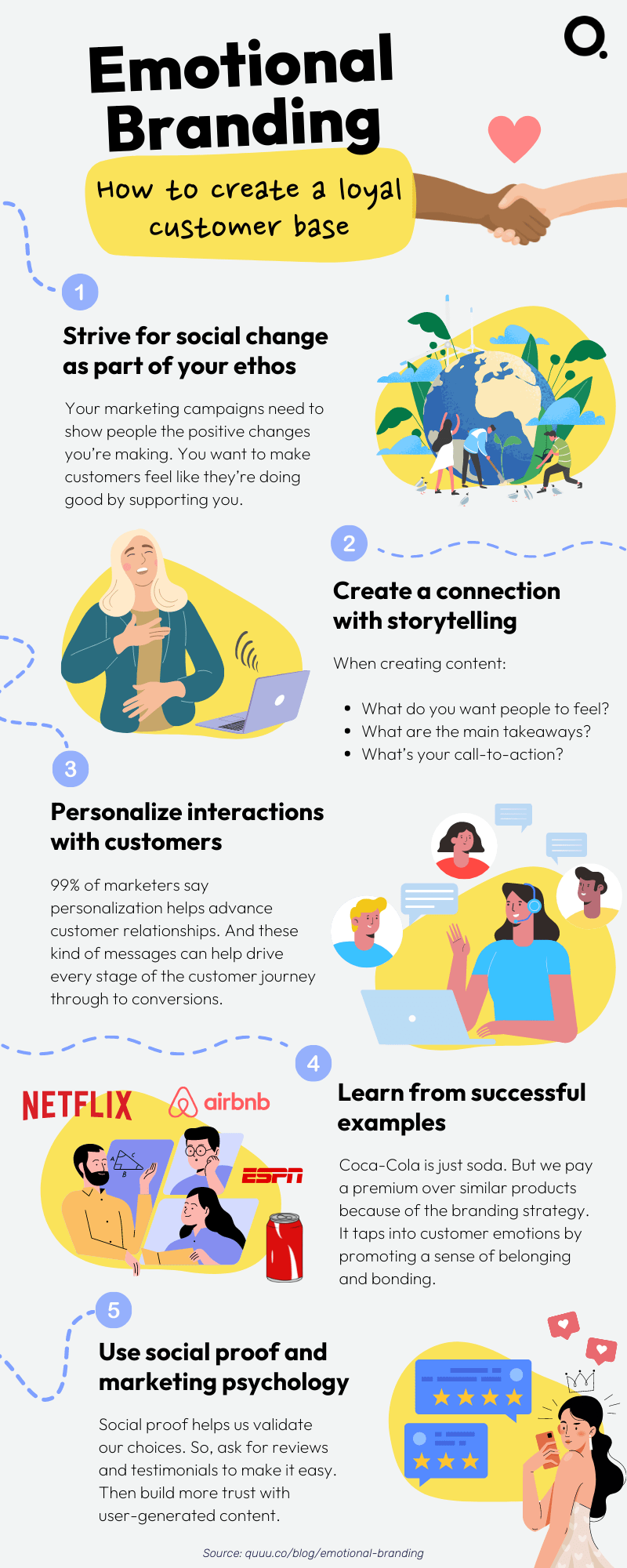
They can be as simple or detailed as you like. This one is about plastic pollution in the ocean. As a wall of text, this could easily be scrolled past. But with the addition of graphics and color, it’s captivating:

Now, if you’re thinking at this stage that you couldn’t possibly make anything as good as that, you’re wrong. Here’s why.
Design tools that make creating infographics easy
These days, you don’t have to be a designer to create stunning infographics. There are plenty of tools out there that make it really simple.
Some of the most popular are:
Each has hundreds of templates to choose from to best fit your brand style. You can then customize nearly every element to make each design your own.
Canva also has a really handy Design School feature. This includes free resources like courses and tutorials to take your design skills to the next level.

Creating branded infographics could be a regular way of boosting your brand awareness strategy. Going back to our partnership idea, why not try some co-branded, too?
My favorite brand awareness “quick win”
This bonus tip is based on infographics. But it’ll only work if you create a really good one. So, you might have to outsource this part (if you’re not that arty.)
Once you’ve got something you’re proud of, find big news sites in your industry. Do some digging for those that feature other people’s content. Then contact them, attach the file or link, and ask if they’d like to feature your infographic.
This can be an easy way of getting a lot of backlinks and social shares fast. We send our Quuu infographics to big sites like Social Media Today.
It doesn’t take much effort. But it can have a big impact. What have you got to lose?
Conclusion
Your brand awareness strategy should never really end. It doesn’t matter how big or well established your company is – you always want to be expanding your audience and customers.
Each of these 6 ideas has the potential to produce big results. But it starts with knowing who you are and how you fit into your customers’ lives. After that, you can work on getting your name out there.
So, try all these ideas and do them often. Ben Francis founded Gymshark when he was just 19. Look at him now. That could be your brand one day too.
Do you have any brand awareness strategy ideas that we haven’t covered? Or have you seen success with any we’ve listed? We’d love to hear about it!
